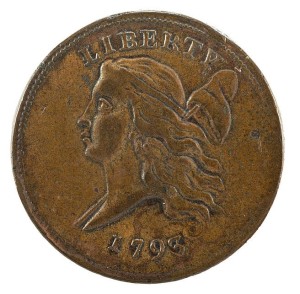Tags
0.005, 1793, absolute, auction, Auction Law, auctioneer, auctioneers, auctions, bid calling, bid increments, bidders, half cent, increment, with reserve, without reserve
We have written about the conflict with minimum bid increments and a without reserve (absolute) auction. Most notably, our analysis here https://mikebrandlyauctioneer.wordpress.com/2013/01/21/absolute-with-minimum-increments/ argued that an absolute auction could not have minimum bid increments.
The courts in the United States have agreed that at an absolute auction, the bidders determine the increments as the auctioneer/seller cannot set limiting conditions (reserves) of certain minimum increases over prior bids.
 Yet, certainly there would have to be some minimum advance bidders could offer (bid) in order to upset the the current bid with a higher bid.
Yet, certainly there would have to be some minimum advance bidders could offer (bid) in order to upset the the current bid with a higher bid.
For example, if the current high bid is $5,000 what is the least another bidder would have to bid (offer) to become the high bidder given the auction was absolute?
In contrast, in a with reserve auction, the auctioneer could set this amount at $1,000, $500 or $250 requiring a subsequent bidder to the $5,000 bidder to bid $6,000, $5,500 or $5,250.
The question today involves — what exactly is the smallest increment which would comply with an absolute auction? Is that minimum $1.00? Is that minimum $0.01 (one cent?) Interestingly, there is evidence that minimum is even smaller: $0.005 (one half cent.) Our mathematical quandary [finding the least amount > zero] is solved by finding the smallest legal tender.
While tokens have been used in the United States with values as small as 1 mill ($0.001) the United States half cent was authorized by the Mint Act of April 2, 1792, which approved all of the first federal denominations and established the United States Mint.
The half cent coin remains legal tender in the United States most recently firmed by the Coinage Act of 1965. Given there’s no smaller legal tender, I would submit an auctioneer could hold an absolute auction and require (and bidders would be essentially forced to offer) at minimum a one half cent higher bid over the prior bid.
Many argue that the Coinage Act of 1965 (and other similar acts) also allow private businesses to dictate which coins or currency they will accept … for example, a retail store could refuse to accept a wheelbarrow of pennies in payment for a $250.00 item.
However, that argument is about the denomination of the coins or currency used, and not a value nor increment issue. Our discussion here is not about an auction buyer paying with one cent coins, but rather how much more that auction bidder must offer to potentially become the buyer in an absolute auction.
To summarize our argument that the half cent coin represents the least increment is based upon two premises:
- There must be some increment amount more than zero (0) which allows another bidder to outbid our $5,000 high bidder (his bid cannot be upset with a $5,000 or less bid.)
- An absolute auction cannot have minimum bid increments, but there must be a least amount which practically allows a bidder to outbid the current bid (outbid this $5,000 bid.)
Of course, we don’t expect any bidder to actually offer $5,000.005, as an example. More importantly, in an absolute auction where the current bid is $5,000, the auctioneer cannot demand (although can certainly suggest) a higher bid of $6,000, $5,500 or $5,250 …
It’s important to note that most bidders behave reasonably in that if a current high bidder is at $5,000 they will agree to bid $6,000, $5,500 or $5,250 (or maybe $5,100) especially if the prior bids were $4,000, $4,500 or $4,750 (or $4,900.) Too, if the auctioneer acts reasonably in this regard, treating bidders consistently, the actual issue of a $5,000.005 bid will likely never arise.
And for that matter, if a high bidder was deemed the buyer with a $5,000.005 bid, how would he propose to pay for that purchase? If forced to use a half cent coin, that wouldn’t be all bad for the seller/auctioneer, given almost any half cent coin is worth more than face value in the coin market.
Nevertheless, the legal issue of mixing certain specific minimum increments with an absolute auction remains answered — there can be no such minimum increments outside of merely requiring a bidder to bid more than the current bid to become the high bidder. Practically speaking, that would have to be at least a one half cent increase.
Mike Brandly, Auctioneer, CAI, AARE has been an auctioneer and certified appraiser for over 30 years. His company’s auctions are located at: Mike Brandly, Auctioneer, Keller Williams Auctions and Goodwill Columbus Car Auction. He serves as Distinguished Adjunct Faculty at Hondros College of Business, Executive Director of The Ohio Auction School and Faculty at the Certified Auctioneers Institute held at Indiana University.
Pingback: Does a bid number grant the right to bid? | Mike Brandly, Auctioneer Blog